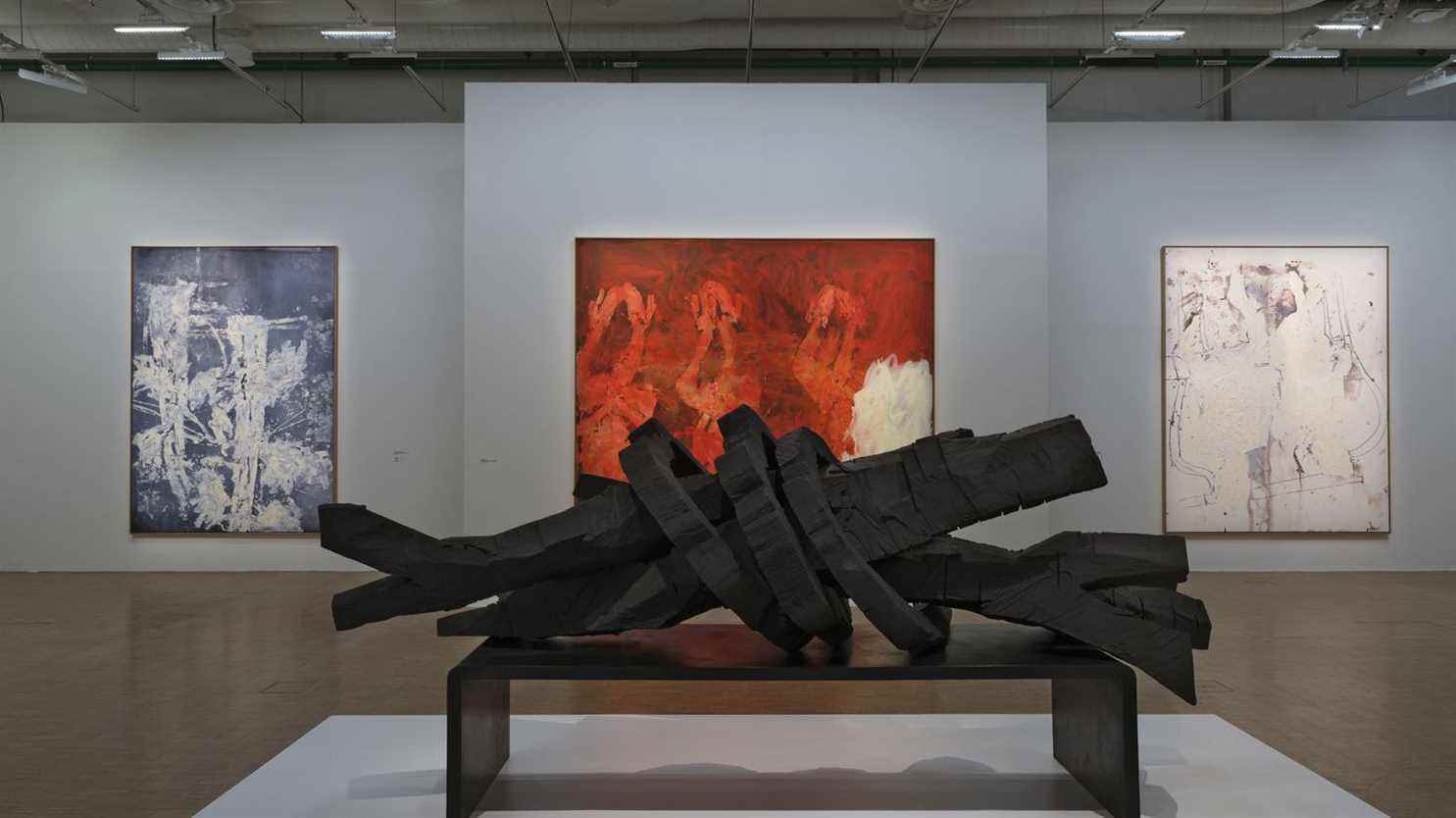60 years of painting, engraving and sculpture by one of the greatest contemporary German artists, this is what the Center Pompidou offers, with the first complete retrospective of Georg Baselitz. This is the opportunity to discover his work in all its scope.
Born in Nazi Germany in 1938, Hans-Georg Kern (he will take his name in tribute to his native village, Deutchbasezliz) spent his first years in the war and the destruction that left a lasting mark on his work, even if over time, it will subside. Then he grew up in East Germany where he began his art studies. But he is excluded from school for having been inspired by Picasso when socialist realism is the norm. He then moved to West Berlin in 1957.
“I was born into a destroyed order, a destroyed landscape, a destroyed society. And I didn’t want to reestablish an order; I had seen enough of the so-called order. I was forced to question everything, to be ‘naive’, to start from scratch “, he will say.
His influences will be multiple, from American abstract expressionists to Italian mannerists or African art, from Jean Dubuffet to surrealists and, beyond, to Lautréamont or Antonin Artaud. He expresses himself in often monumental canvases, in a constantly evolving painting.
These few images evoke his journey, from the 1960s to today.
Die große Nacht im Eimer (The Big Fucked Night), 1962-1963

While in 1961 he wrote with his friend Eugen Schönebeck a text on the post-Apcalyptic situation of Germany in 1945, the First pandemonic manifesto and that he was overwhelmed by the discovery of the horrors committed by the Nazi regime, he produced dark works, including this one which caused a scandal and was censored when it was exhibited in a gallery in West Berlin in 1963 with two other paintings. He is being sued for indecent assault.
Die großen Freunde (The Great Friends), 1965

In 1965, Baselitz spent six months in Florence, where he was fascinated by the mannerist painters of the 16th century. When he returned to Berlin, he created a series of works called A new type, known as the Hero, figures inspired by mannerist distortions, who wander in devastated landscapes. Those “two friends” looking like soldiers in a field of ruins are Baselitz himself and his wife Elke (he will often represent his couple) whose martyred hands stretch out towards each other without being able to reach each other.
Die Mädchen von Olmo II (The Daughters of Olmo II), 1981

This painting was inspired by young girls cycling in an Italian village square. The bright colors are reminiscent of those used by the German painters of the Die Brücke group. The two figures are reversed. The reverse pattern is a principle he adopted in 1969, which he continued to use while varying the techniques. He made him famous and he became his trademark. It allows him to break with the faithful representation of reality.
Modell für eine Skulptur (Model for a sculpture), 1979-1980

A great collector of African art, Baselitz began to produce unfinished-looking sculptures from 1979 onwards, which he cut from tree trunks with a chainsaw, ax and chisel and which he daubed with paint. When he exhibited it for the first time, in 1980 at the Venice Biennale, it sparked controversy. The outstretched arm, palm facing the sky, is reminiscent of the Hitler salute while it is inspired by Lobi figures from West Africa. Some sculptures are present in the exhibition. This aspect of Baselitz’s work was discovered in 2011-2012 at the Museum of Modern Art in Paris.
Bildneunundzwanzig (Tableau-twenty-nine), 1994

After the fall of the Berlin Wall in 1989, Baselitz delves into his childhood memories, those of the city of Dresden destroyed by bombardments at the end of the war, of which he saw the rubble at the age of seven. It pays homage to the women of Dresden who cleared the city with a series of sculptures and monumental paintings. In the 1990s, he created 39 large paintings in which heads, busts or quasi-abstract bodies were sometimes reduced to spots of color. They are carried out on the ground, a practice that he still uses today. Here, the bust of his wife floats on a background where black designs evoke plant motifs.
In der Tasse gelesen, das heitere Gelb (Read in the cup, the playful yellow), 2010

In the 2000s, the artist revisits his own paintings in the cycle Remix : he plays with existing compositions, adding new references and paying homage to artists he admires. Here he takes up the first double self-portrait with his wife from 1975 (Schlafzimmer, Bedroom) which represented the naked couple, in a flexible posture and bright colors. Here they are dressed, in cool, watered-down colors. This work is a nod to a portrait made by Otto Dix of his parents (The artist’s parents, 1924).
Wagon-lit mit Eisenbett (Wagon-lit with iron bed), 2019

From 2014, Baselitz painted evanescent figures that evoke his fragile old body, in self-portraits, portraits of his wife or with her. This was done after Elke’s hospital stay. The inverted lines evoke the hardness of the hospital bed. The contrast of the colors is reminiscent of an x-ray image.
Baselitz, The retrospective
Centre Pompidou
Paris 4th
Every day except Tuesday, 11 am-9pm
Prices: € 14 / € 11 / free for children under 18
From October 20, 2021 to March 7, 2022
